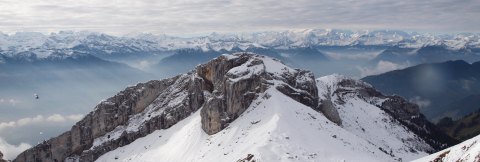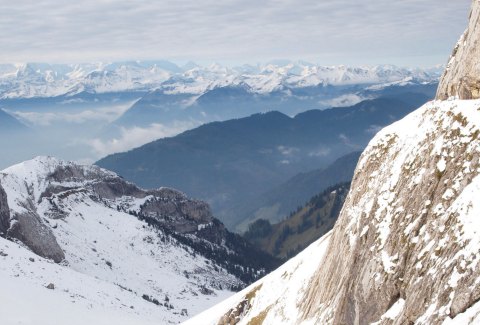Home | About CCW | Contact Us | Climate change Meaning | Causes | Solutions | Emissions | Carbon trading
Ice ages
Ice ages or glaciations are a relative concept that is not easy to define. General agreement is for a a glaciation to be when the overall temperature is low enough for ice sheets to persist.
There have been at least 5 major periods of global cooling that conform to this definition.
Just before the first animals evolved around 600 million years ago there was an especially long and deep period of cold called the Cryogenian that lasted from 800-635 million years ago. A longer period than dinosaurs existed and more tha 50 times the 3 million years that the genus Homo has been around.
In fact there have been many cold periods that have lasted longer than the existence of our genus.
We are also still in the latest one that began at the start of the Pleistocene epoch 2.5 million years ago.

Periods of cold and shorter periods of warmth are inevitable given the size and energy of our sun and that the earth is in a wobbly orbit around it.
The actual causes are not fully understood but are a combination of
- atmospheric composition
- position of the continents - ice ages may start when continents block the flow of water from the tropics to the poles
- fluctuations in ocean currents
- uplift of the Tibetan plateau
- variation in the Earths orbit (Milankovitch cycles)
- sun's energy output
- vulcanism
These are the usual suspects in the causes of climate change

Once a cold spell has established there are some positive feedbacks that allow it to persist including increased albedo, decrease in forest cover, changes in precipitation (especially snowfall) and shifts in ocean currents.
But on a dynamic Earth there are counter processes that are negative feedbacks that promote warming that include greater aridity and sea level change.
The net effect is that even within glaciations there are warmer and cooler periods. The global thermometer is always on the move.
It was especially cold 20,000 years ago with the last warm peak about 150,000 years ago and generally warm spells are shorter than the cooler periods in-between.
On shorter timescales cold actually renews the landscape.
Like an intense period of fallow, ice in parts of the northern hemisphere renew soils, changes their mineralogy and makes them more efficient at growing crops. Even with coal power and later oil, the west might not have been so successful without fertile soils and damp weather.
The conundrum
There will be more ice ages.
We may even dip down again into the current one while humans are still around.
Back to top of Ice ages | Back to Climate change effect | Back to Climate change wisdom home page
Recent Articles
-
Reducing emissions while looking for solutions...
Nov 01, 15 04:46 PM
I've seen a lot of post's online for ideas on reducing emissions. The one suggestion I have not seen, is the most obvious. There should be a government -
Climate change evidence
Mar 24, 15 06:22 AM
Real climate change evidence has to demonstrate a change in climate. An extra sunny day or a severe storm or a flood is not enough. -
The climate change effect
Feb 19, 15 03:08 AM
What will be the climate change effect? There isn't one, there are many. Perhaps too many for us to understand.

New! Comments
Have your say about what you just read! Leave me a comment in the box below.